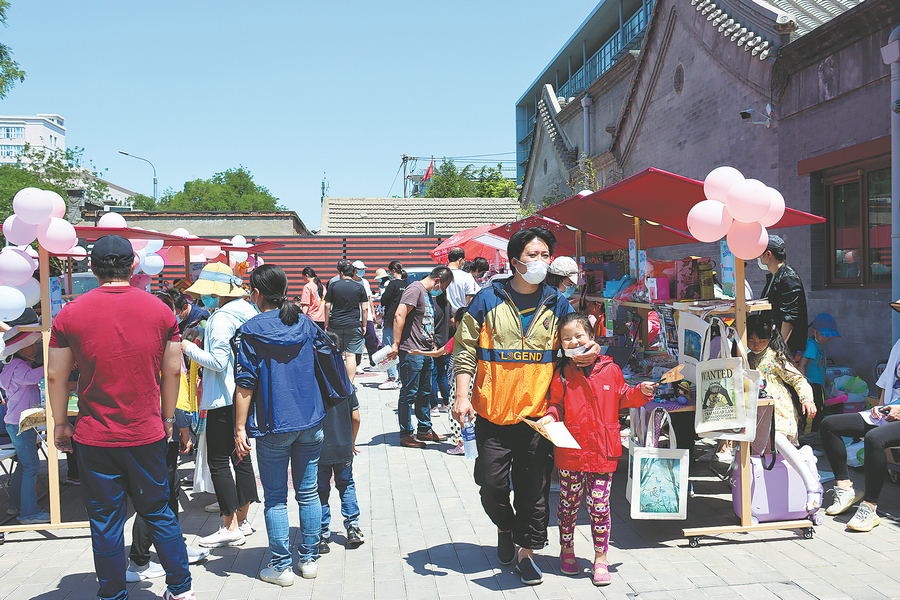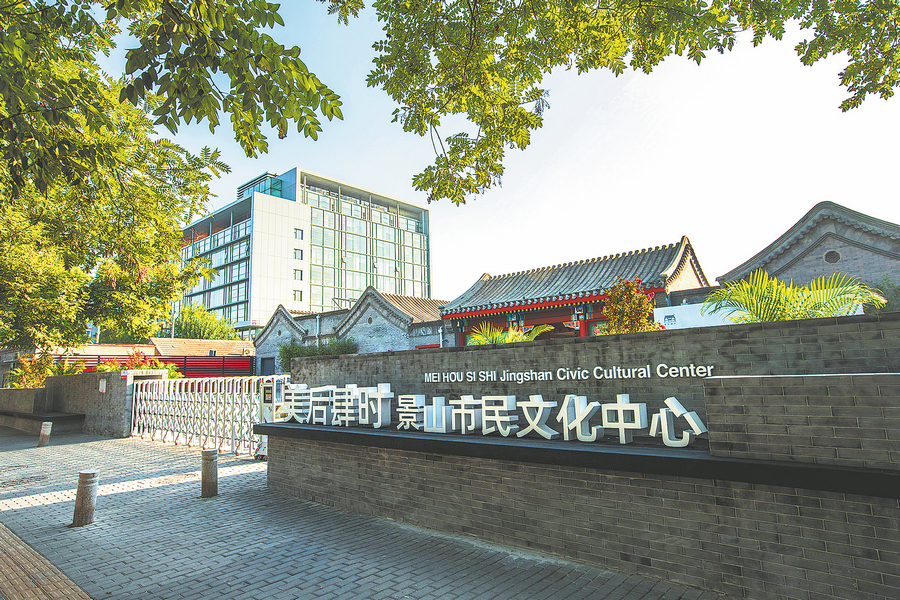

It was later used as office space for a municipal public institute.
"We preserved most of the historical appearance of these office buildings, when we restructured and renovated them," Li adds.
A 100-year-old magnolia tree gives the courtyard a shaded place to relax, with a number of trendy shops selling cultural creative items and art, as well as cafes, surrounding it.
"They often hold cultural activities like art and book exhibitions," Li says.
The idea is for visitors to enjoy a modern experience in historical hutong neighborhoods, where the tradition of ringing the bell at dawn and beating the drum at dusk can still be observed.
The park also has a small theater that serves as a space for young theater professionals to work.
"To date, we have worked with multiple theater teams, offering them a discounted venue for rehearsals and performances," says Fang Chao, who is in charge of the park's operations. "Theater courses here will also be open to visitors and local residents."
About 4 kilometers to the southeast of Jintai 5Lmeet, an immersive aerial experience of stunning landscapes can be enjoyed at a recently built cinema in the Longfu Temple area.
In the cinema, audiences can get breathtaking views from mountain peaks, soar above vast deserts, traverse a sea of clouds, and greet the rising sun.
"The scenes have been filmed by our team over 2,920 days. We have 100,000 km of aerial footage from 137 different locations in China," says Lyu Minghong, whose company developed the project.
"They are presented in stunning 8K, allowing audiences to virtually visit scenic spots across the country as if they were really flying."
The cinema is one of five digital experience spaces that offer simulated space and ocean travel in the Longfu Temple area.
Built in 1452 during the Ming Dynasty (1368-1644), the site was once the only temple in Beijing to accommodate both lamas and monks, and later became a famous venue for temple fairs.

The area, which has suffered from several fires over the course of history, is adjacent to the Forbidden City and the Wangfujing commercial center, and covers 15.5 hectares, and includes Longfu Temple, Longfu Square and a number of historical structures built between the 1960s and '90s.
Since 2012, Dongcheng district has been working on restoring the historical appearance of the area and on developing new urban functions, and it has become a popular destination in downtown Beijing.
The first phase of renovation started with the opening of a second M Woods Art Museum.
A few hundred meters from the museum and its neighboring art zone is a drama center, which houses a cluster of small-scale theaters, and shops around it sell souvenirs.
More exciting cultural experiences are on the way. The second phase of the restoration of the Longfu Temple area started earlier this year, and will include Chinese cultural zones and world-class museums.
"The second phase covers an area of approximately 100,000 square meters," says Wang Hui, a senior officer with the restoration project. "In the future, the area's commercial spaces will primarily serve for exhibitions and performing arts."
Construction is expected to be completed by the end of this year, and a soft opening is scheduled for next June.
The temple area, the Palace Museum, and the Wangfujing commercial district form a cultural triangle, elements of which will be featured in a digitalization project currently underway.
Augmented reality shopping, digital exhibitions and immersive digital consumption will be introduced to contribute to making Beijing an international center of consumption and a digital benchmark, Wang says.
Contact the writer at yangfeiyue@chinadaily.com.cn